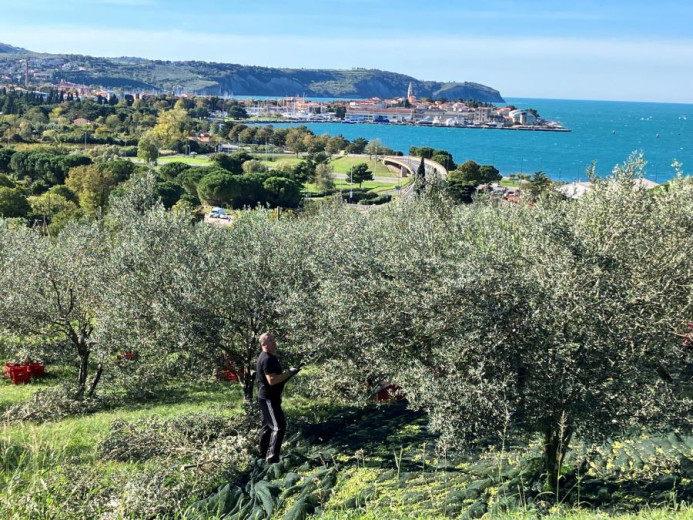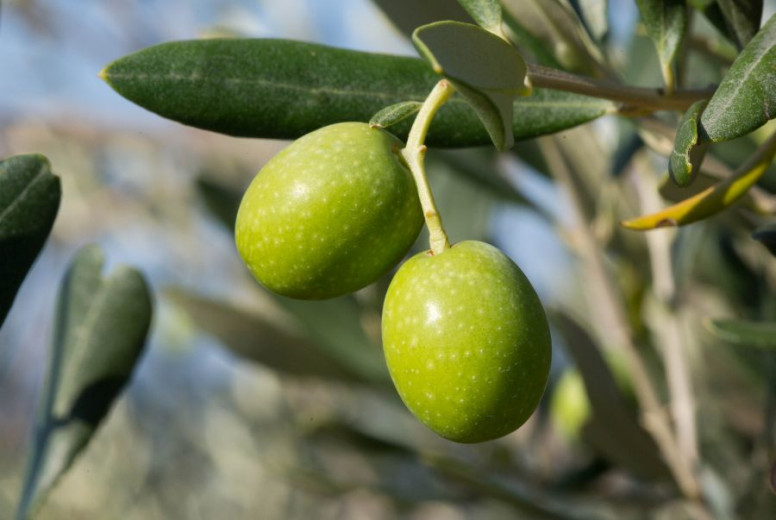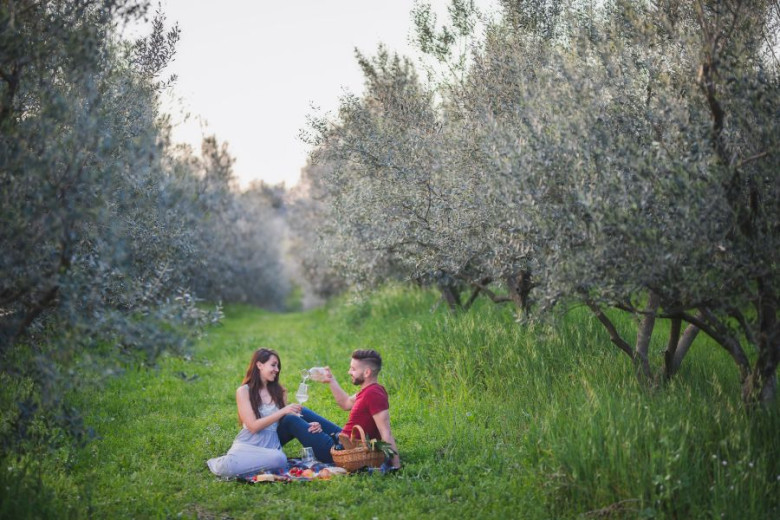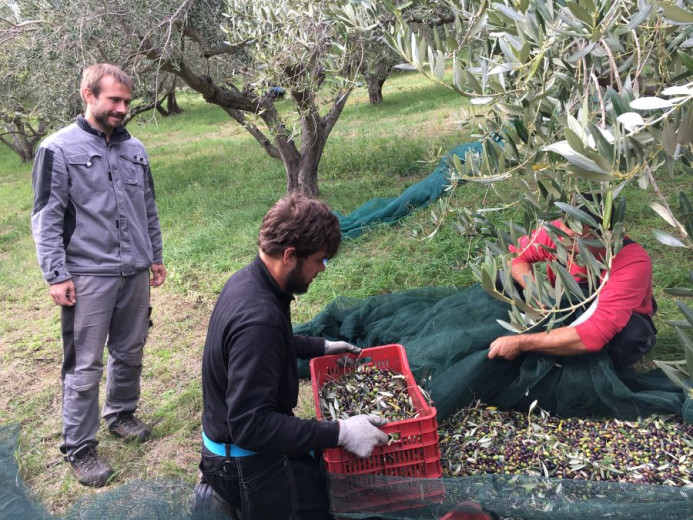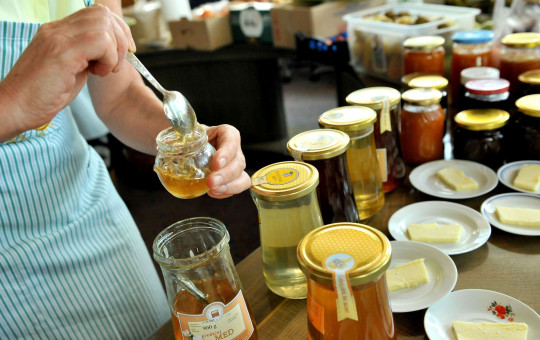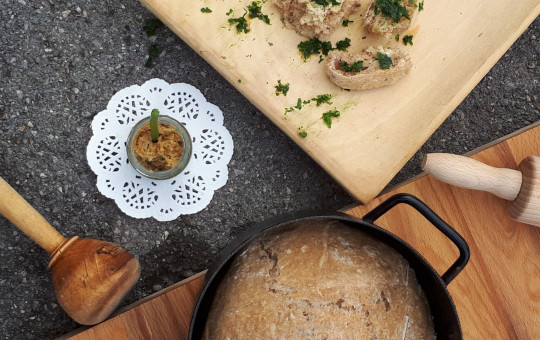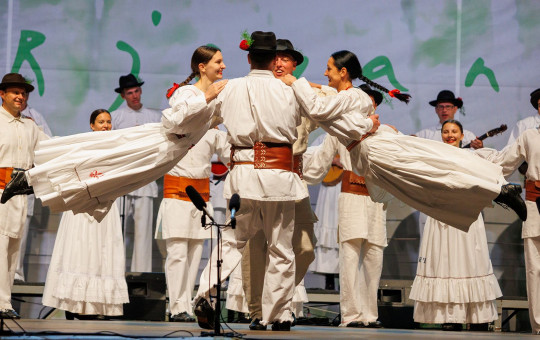Date: 27. October 2025
Time to read: 2 min
Shorter days, cold mornings, red vine leaves and olive groves bursting with ripe fruits announce that it is time to harvest olives in Slovenian Istria. Olives have been grown in the Slovenian territory since the Roman period and represent an important part of the agricultural tradition. Although the quantities of olive oil produced in Slovenia cannot compete with those of large Mediterranean producers, such as Italy, Greece or Spain, our olive oils are distinguished by their exceptional quality and distinct flavour.
The majority of olive groves can be found in Slovenian Istria, but olives also thrive in the Goriška region, the Goriška Brda Hills, the Vipava Valley and the Karst. Slovenian Istria is one of the northernmost regions where olive trees still grow. It is this particular location that contributes to the unique properties of the olive oil produced in this territory.
The special geographical area of cultivation enables the production of high-quality oil with the protected designation of origin, Extra virgin olive oil of Slovenian Istria. This oil represents only one tenth of Slovenian production, but its quality has put Slovenian olive growing on the global map of olive oil production. Certain experts named Istria the world’s best region when it comes to olive oil quality.
Olive growing is not merely an important agricultural activity, but it also maintains the characteristic Mediterranean landscape with terraces and groves, and represents cultural heritage being passed on from generation to generation.
From a branch to a bottle
Olives are harvested in Slovenian Istria from the end of September to November. Many olive growers still harvest them manually, which requires a lot of attention and care. Others use special rakes or machines to accelerate their work. It is crucial that the olives are not damaged during harvesting and that they are processed as soon as possible as this affects the oil quality.
-
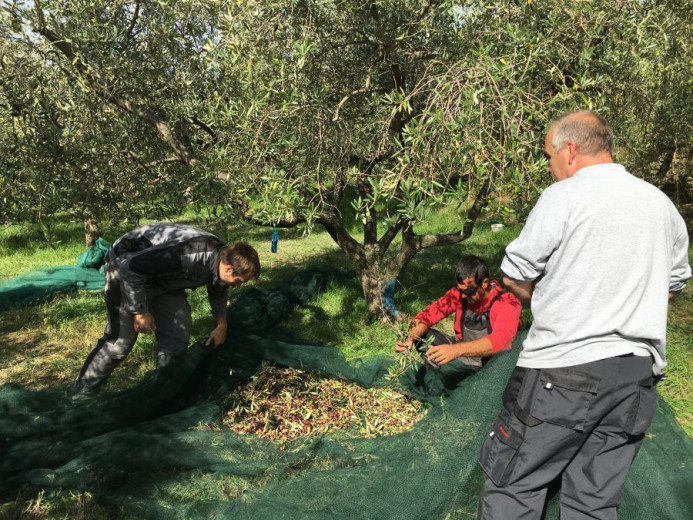 Olive harvesting is an ancient tradition that connects families and generations in the Mediterranean. Photo: Science and Research Center Koper
Olive harvesting is an ancient tradition that connects families and generations in the Mediterranean. Photo: Science and Research Center Koper
-
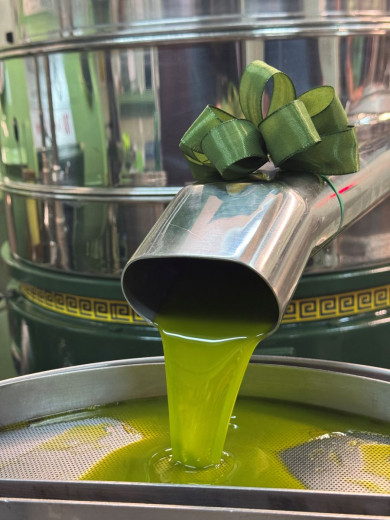 The carefully harvested olives are taken to the press, a special type of mill, from which the olive oil flows. Photo: Science and Research Centre Koper
The carefully harvested olives are taken to the press, a special type of mill, from which the olive oil flows. Photo: Science and Research Centre Koper
Once harvested, olives are first washed in water and then crushed in a mill. The olive paste is later mixed and pressed to extract the precious olive oil. Speed and attention are vital for the preservation of freshness and the quality of the end product.
Slovenian olive varieties
There are some 500,000 olive trees in Slovenia. According to the Science and Research Centre Koper, we annually grow between 2,000 and 6,000 tonnes of olives, from which 300 to 900 tonnes of olive oil is produced.
Istrska belica (Istrian White) is by far the most common olive variety. It has a typical fresh aroma and a distinct bitter and spicy flavour. Since it is well adapted to the Bora wind and low temperatures, it is more resilient to challenging weather conditions. In addition to Istrska belica, four other native olive varieties are also registered in Slovenia, i.e. Buga, Črnica, Štorta and Mata.
Lifestyle and gastronomy
Olive oil is indispensable in Istrian cuisine and an important part of the cultural heritage. The use and consumption of extra virgin olive oil became synonymous with a healthy lifestyle. The oil is rich in healthy unsaturated fats, vitamin E and other beneficial substances. The extra virgin olive oil of Slovenian olive growers is of a golden green colour and has exceptional aroma and flavour.
Visit olive growers and learn about the tradition
The doors of many Slovenian olive growers are open to anyone who wants to learn first-hand about the process of producing this precious liquid, from the tree to the bottle. The olive growers will take you to their groves and talk you through their work. If you visit them at harvest time, you can also help them pick olives. Try various types of olive oil in a tasting session and discover the diversity of Slovenian olive oil.

